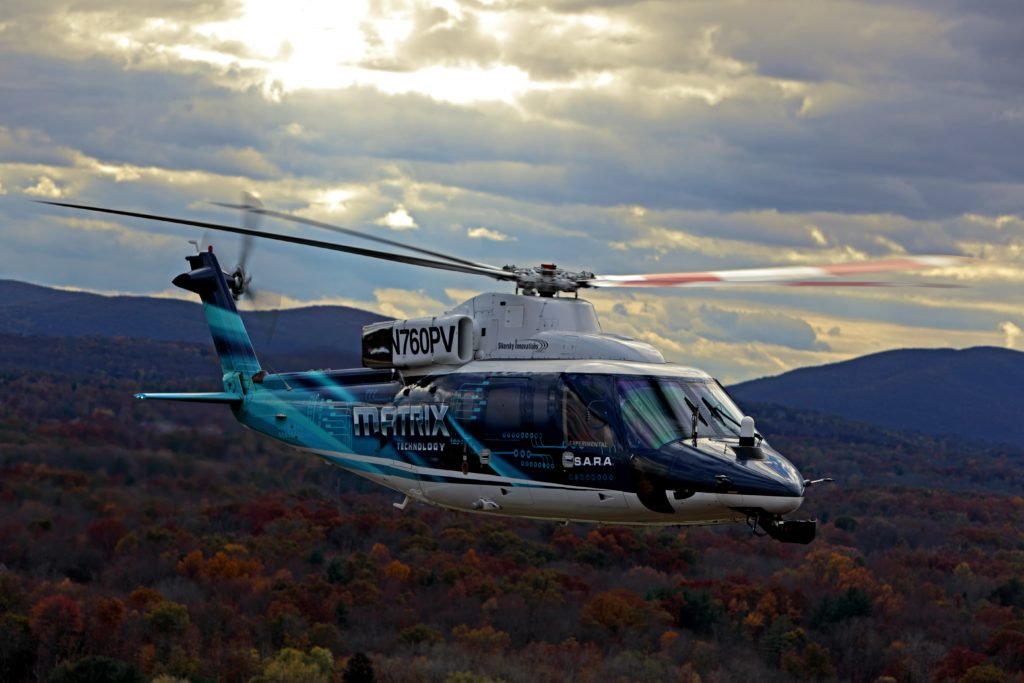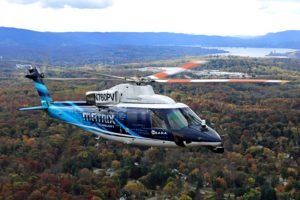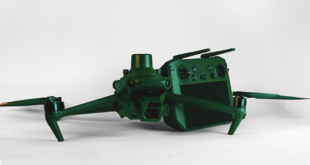Vertical Take Off and Landing (VTOL) are a critical component of urban air mobility, drone taxis, and more future applications of flight. Lockheed Martin company Sikorsky Innovations is at the forefront of VTOL development.
Creating the Future of Vertical Flight: A Sikorsky Innovations Perspective
“Use the greatest of caution when combining the words ‘Impossible’ and ‘Aviation.’” -Ivan Sikorsky
By: Dawn M.K. Zoldi, Guest Contributor
What does the next decade of vertical flight look like? What comes next and what comes after next? On Thursday, March 25, 2021, Jonathan Hartman, Sikorsky Innovations Strategy Lead provided his insights on these questions during a virtual webinar hosted by the New England Air Museum. His arm of Sikorsky, a Lockheed Martin company based in Connecticut, tackles the toughest challenges of vertical flight and matures next-generation products by curating the global tech, talent, processes and products to make them a reality.
Hartman explained that Sikorsky Innovations focuses on three tech pillars: speed, autonomy and intelligence. For each of these, Sikorsky pulls advances in technology into aviation and asks “What does this do for us that we did not have before?”
Their process is one that all successful tech organizations use. First, define the problem (What are we trying to solve? Is it a real problem?) Once defined, determine is there a gulf between technical feasibility and the realities of the market? (Can you solve the problem at the right time in the right market given the realities of the market?) After this, you must find your first customer and then find a way to get them to stay, and convince others to do the same, what Hartman referred to as the psychology of adoption. Finally, to create enduring change and sustainability requires micro and macro fundamentals.
 Urban air mobility (UAM) can solve a myriad of transportation problems. The economic and societal benefits of UAM have been widely acknowledged. Using small vertical takeoff and landing (VTOL) vehicles in the third dimension to move people around cities as a form of transportation will reduce traffic, improve the environment and enhance overall quality of life.
Urban air mobility (UAM) can solve a myriad of transportation problems. The economic and societal benefits of UAM have been widely acknowledged. Using small vertical takeoff and landing (VTOL) vehicles in the third dimension to move people around cities as a form of transportation will reduce traffic, improve the environment and enhance overall quality of life.
And this is technically feasible now. Hartman points to the availability and accessibility of compute power and advanced materials as necessary technological precursors. The advances in autonomy, big data and 3D printers will also help unlock the potential of VTOL flight.
With regard to autonomy, Hartman envisions “optimally piloted aircraft,” what he describes as an aircraft that has the capability in the system to support the flight no matter how many pilots are in the loop, to take in data from its surroundings and do contingency management. The goals of autonomy in the vertical lift context are to:
- Eliminate the leading driver of VTOL accidents – degraded visual environment (DVE) / controlled flight into terrain (CFIT) contribute to 75% of all VTOL accidents
- Reduce pilot workload and enable crew reductions
- Enable flexibility in what aircraft can do
Big data can also be leveraged for VTOL flight, especially when combined with intelligence. Using machine learning and advanced algorithms, an aircraft can know about itself and impact how it flies on its own. For example, if the aircraft detects a blade damper needing repair, it could change the flight controls to take the load off of that part to extend the life of it. On the prevention side, using advanced analytics, Hartman foresees a future in which the aircraft “calls the maintenance people for parts.”
3D printing will kick start the industry by enabling parts to be made at the point of need, reliably and with high quality on site. This will greatly reduce maintenance costs and down time.
According to Hartman, several other change agents will make UAM soar, including:
- Electrified powertrains – (vice propulsion) simplifies vehicles, takes cost out and eases maintenance; he called this “key to changing the industry”
- Workload reduction – tied to autonomy, when we can make what an air vehicle does less complex for the humans that have to interact with that aircraft
- Digital tapestry – having data at all stages of the process to inform decision-making and action
- Prognostics & health management (PHM) – proactive based maintenance that is predictive and can work on issues in advance
Combining all of these capabilities and enablers produces positive industry outcomes in the form of increased safety, more practical configurations, new markets and increased availability of assets (being able to use an aircraft when needed without unscheduled maintenance).
Sikorsky Innovations is working towards this end state with their SARA (Sikorsky Autonomous Research Aircraft), X2 Technology (stacked rotors that spin in opposite directions to achieve balance, maneuverability, hoverability and push further and faster with speeds in excess of 250 knots in cruise built into their SB1 Defiant and S-97 Raiders) and Matrix™ Technology (for high value assets operating in a 3D environment, containing multispectral sensing, safety certifiable to carry humans, operated not piloted and flyable with just 45 minutes of training). Sikorsky’s ALIAS research mission with DARPA culminated in an end-to-end completely autonomous mission. The aircraft had a pilot in charge and a safety pilot who used an iPad-like computer to command the aircraft as needed. However the aircraft avoided obstacles without pilot input, autonomously picked a landing spot and touched down on its own.
So, what does the future of VTOL look like?
- Safer
- More flexible and adaptable – new missions, evolve and improve faster than today
- More available and more productive – for customers to buy and operate
- Higher performing – faster, farther, higher
- More sustainable – in all of its forms – easier to maintain and better for environment
- More accessible – to the public for use cases they need them for
For Sikorsky Innovations, the future has arrived.
 Dawn M.K. Zoldi (Colonel, USAF, Retired) is a licensed attorney with 28 years of combined active duty military and federal civil service to the Department of the Air Force. She is an internationally recognized expert on unmanned aircraft system law and policy, the Law-Tech Connect™ columnist for Inside Unmanned Systems magazine, a recipient of the Woman to Watch in UAS (Leadership) Award 2019, and the CEO of P3 Tech Consulting LLC. For more information, visit her website at: https://www.p3techconsulting.com.
Dawn M.K. Zoldi (Colonel, USAF, Retired) is a licensed attorney with 28 years of combined active duty military and federal civil service to the Department of the Air Force. She is an internationally recognized expert on unmanned aircraft system law and policy, the Law-Tech Connect™ columnist for Inside Unmanned Systems magazine, a recipient of the Woman to Watch in UAS (Leadership) Award 2019, and the CEO of P3 Tech Consulting LLC. For more information, visit her website at: https://www.p3techconsulting.com.
https://dronelife.com/2021/03/30/passenger-drones-urban-air-mobility-and-more-sikorsky-innovations-is-tackling-the-major-challenges-of-vtol-flight/
 Unmanned Aerial Vehicle The latest drone news
Unmanned Aerial Vehicle The latest drone news




